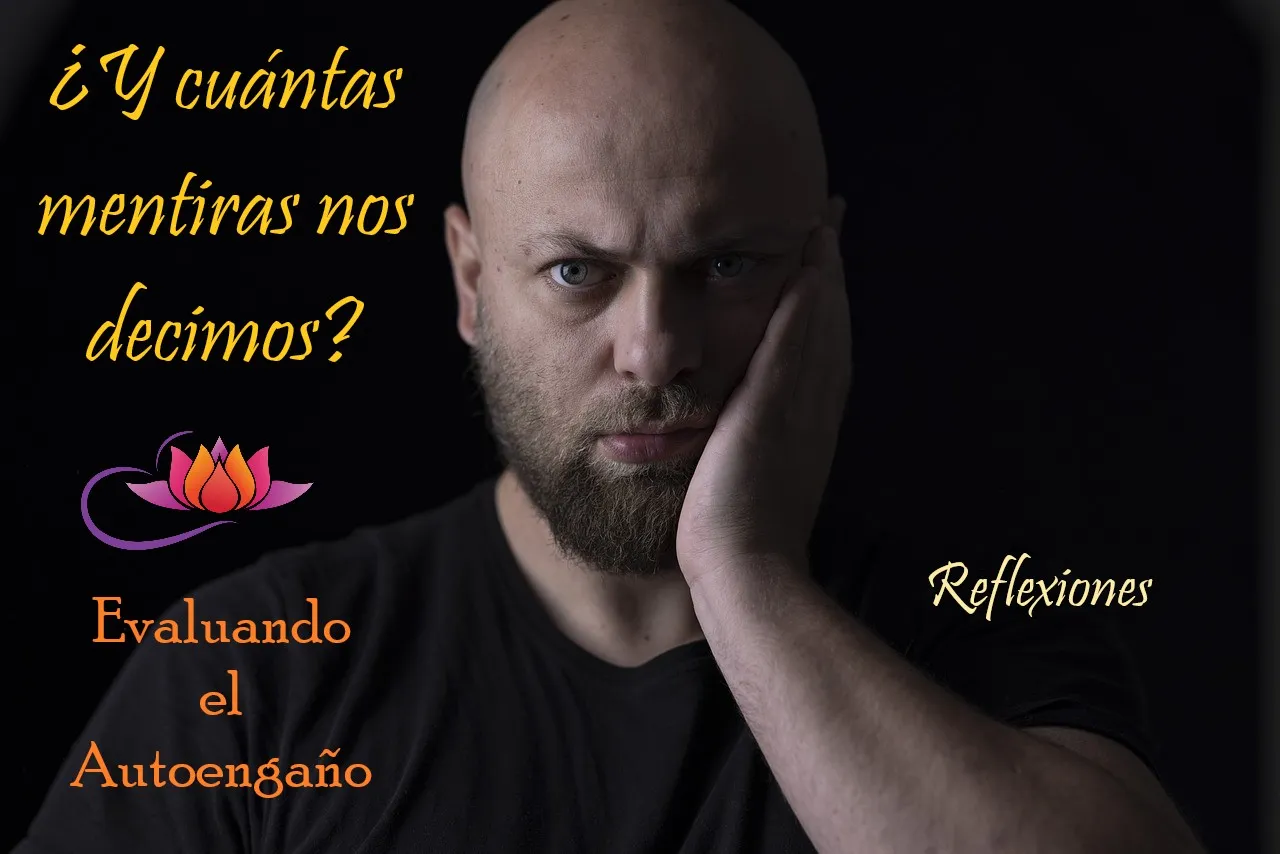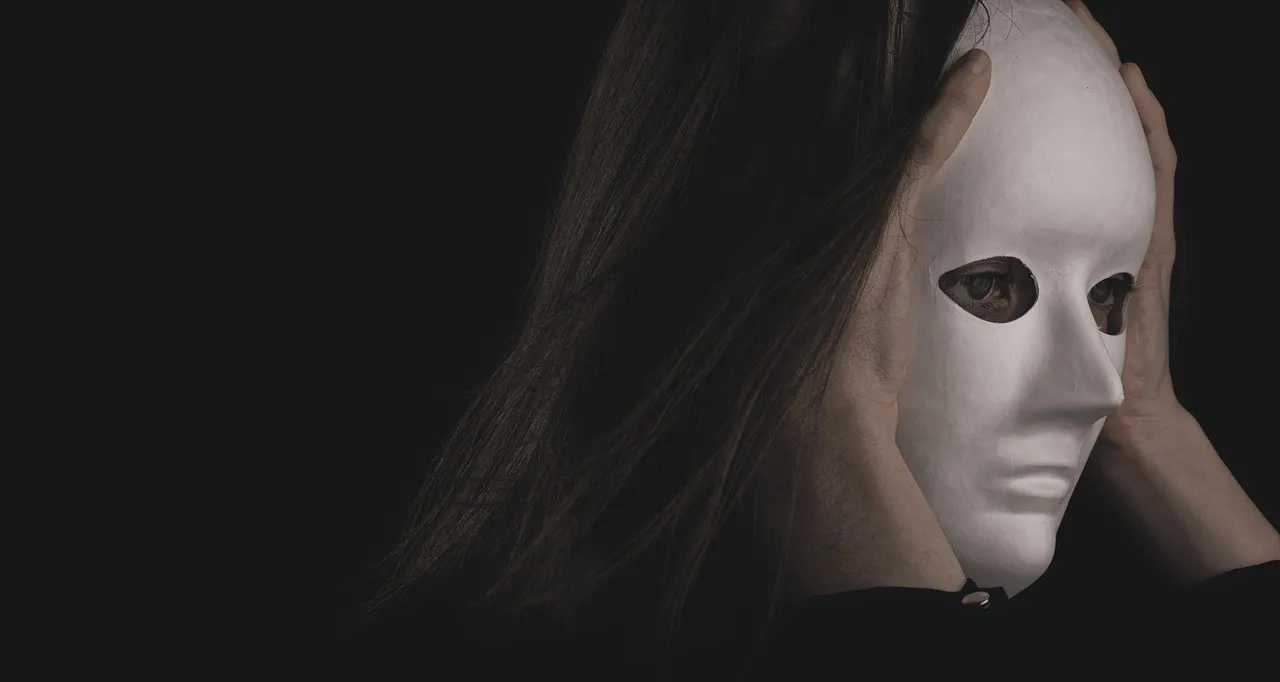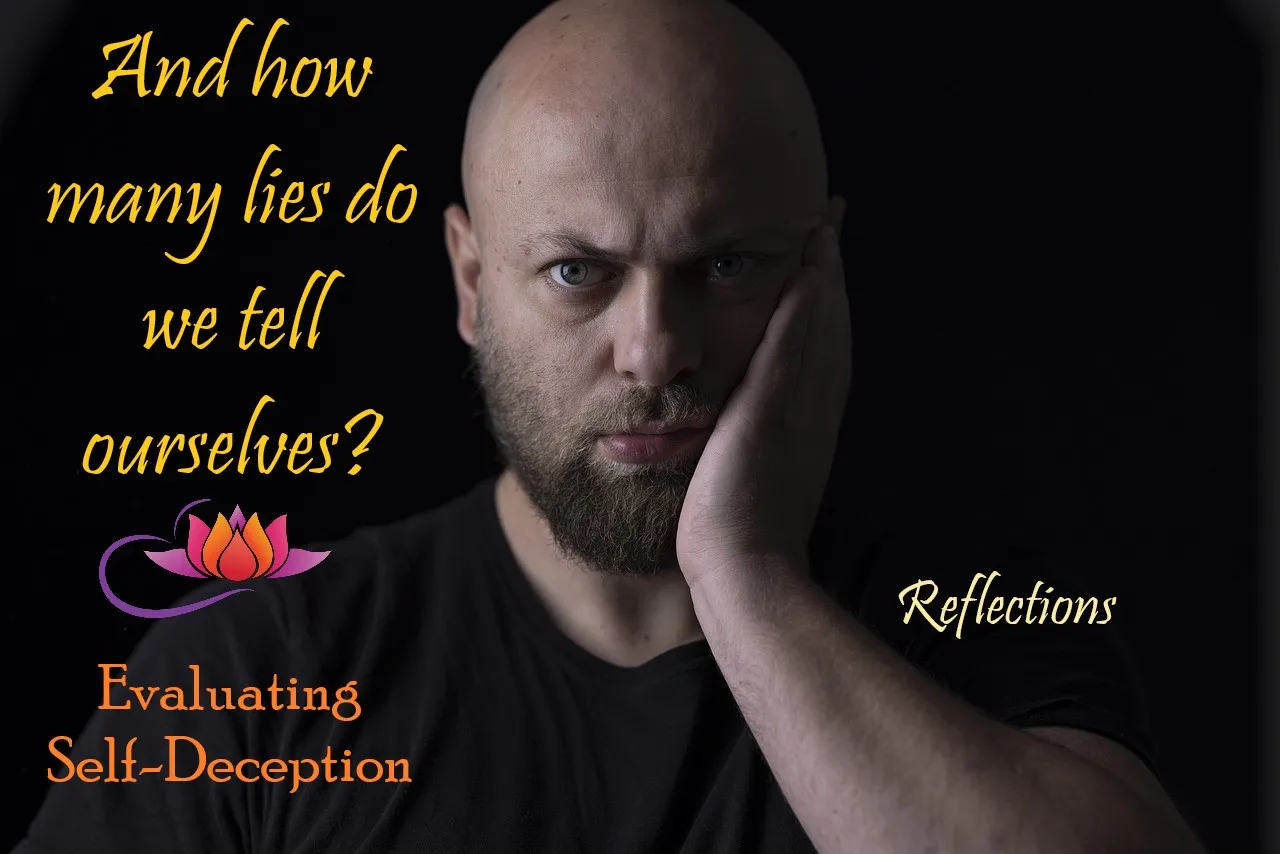

¿Jura usted decir la verdad, toda la verdad, solamente la verdad o nada más que la verdad? ¡Y juramos! Sabiendo que es imposible hacerlo.
Pero, esto va más allá de nuestra realidad, pues siempre hay algo de lo que afirmamos que no está claro y que no es verdad.
Y es que, no sabemos cuál es la verdad y nuestra aproximación del universo en nuestra memoria nunca es exacta, ni siquiera un trabajo científico puede afirmarla, sino aproximaciones, por lo que nos autoengañamos siempre.
El autoengaño debe ser estudiado, porque hay mentiras que debemos analizar para que comencemos a evolucionar.


Mentiras que derrumbamos en @holos-lotus
Basta una pasadita por nuestras publicaciones -como por esta de @piensocrates- para que nos demos cuenta de que hay una serie de mentiras que nos decimos a nosotros mismos y que, los que creamos contenido, hemos derrumbado.
Incluso, sin habernos dado cuenta de ello.
Una de ellas es, que no tenemos tiempo, mientras que, no solo preparamos los artículos, sino que también los estudiamos y los editamos; y además de eso, si podemos, los publicitamos.
Otra de las famosas mentiras que decimos es: “Tengo demasiada edad para hacerlo”.
Y estoy impresionado como muchos de nosotros tenemos edades que sobrepasan los 50 años y aquí estamos, trabajando un sueño y haciendo crecer una red.
Y otra, que también es frecuente, es que necesito ser profesional y tener un título en alguna materia para poder escribir bien; y nada más falso, basta, como dije, con darte un paseo por nuestras publicaciones.

Pero hay otras mentiras, más peligrosas, que nos distancian…
Y me estoy refiriendo a esas mentiras que todos sabemos que lo son y que sin embargo, culturalmente, tenemos muy arraigadas en nuestras valoraciones.
Ejemplo: “Yo soy normal” o “tengo que buscar un lugar en la sociedad porque soy diferente al común” o, “yo me valoro como del promedio”.
Más, siempre nos basamos en la norma y en lo que creemos que es la mayoría; pero hay muchas diferencias en el ser humano que se mantienen ocultas, preservándose de una mala valoración o evaluación de la sociedad, y que no podemos cuantificar.
Por lo tanto: ¿Sabemos, realmente, que las estadísticas son así de exactas?
La inexactitud de lo estadístico es otra verdad que nunca asumimos, lo que es otra mentira que también nos decimos sobre la norma o lo normal.
Hay conductas de hace apenas unas décadas, consideradas normales, que hoy en día no se ven bien; mientras, han nacido otras que nos han puesto a pensar y a evaluar nuestra moralidad adquirida y que nos han alejado de otros por expresarla.
Y hay otras que han hecho mucho daño, como no hacer las cosas por temor a fracasar.
La verdad es que el hombre intenta miles de veces en cada uno de sus avances tecnológicos, fracasando constantemente, hasta obtener un resultado que sea positivo.
Debemos ver el fracaso como la construcción del éxito y no dejar de hacer las cosas o de comenzar a hacerlas, porque vamos a fracasar.

La disonancia cognitiva
Algunos autores y psicólogos, como en este caso voy a mencionar a Alberto Soler Sarrió, que concuerdan en que, la Disonancia Cognitiva tiene mucho que ver con el autoengaño.
Este es el fenómeno al que los psicólogos hacen referencia cuando hablan del estado desagradable a nivel emocional que ocurre, porque tenemos discrepancias entre las ideas y las creencias acerca de algo.
Festinger, en 1957, un psicólogo americano; propuso la teoría de la disonancia cognitiva, que explica la ansiedad o la incomodidad que sentimos cuando nuestras actitudes o creencias chocan o entran en conflicto con nuestros propios actos y, por lo tanto, para modificar y evitar esa sensación displacentera, nos autoengañamos.
Esto es lo que sucede, por ejemplo, cuando tenemos miedo al cambio, cuando debemos realizar una cantidad de esfuerzo para poder vencer el cambio que necesitamos hacer para seguir adelante o lograr nuestras metas.
Es por eso que, como mecanismo de defensa, tendemos a decirnos mentiras para que encajen en las ideas que tenemos; y entre esas mentiras, están: No tengo tiempo, no tengo suficiente dinero, ya estoy muy viejo para aprender sobre tecnología, y otras más que no muestran sino miedo.

Otras mentirijillas muy dañinas
Por último y por ahora, algunas mentirijillas que me gustaría dejar aquí sobre la mesa, y que yo utilizo bastante, son:
Hoy no lo hago, mañana sí; es procrastinar.
No tengo esta habilidad; lo que significa negarme la posibilidad de aprenderla.
Otra, sobre la desorganización, es: “Demasiado trabajo para hacerlo hoy.”
Igualmente: "Yo siempre me acuerdo de todo y no necesito escribirlo."
Y hay algo que me preocupa mucho y es, esa mentira que todos nos decimos sobre que, nos da igual lo que los demás digan o piensen de nosotros; que en realidad nos desconecta de otras interrelaciones sociales.
Lo cierto es que mentimos muchas veces, siendo un mecanismo de defensa cuando aún no estamos preparados para asumir ciertas circunstancias que nos generan angustia y estrés.
Pero también, nos ayuda a salir de situaciones incómodas, a ser pacifistas y a evitar conflictos.
A esconder muchas de las cosas que estamos pensando y que debemos resguardar por ser parte de nuestro ser interior.
Pero -hay que decirlo- podemos hacernos daño a nosotros y a los demás, y muchas veces terminamos creyéndolas, frenando así nuestro progreso.


Tired of lying to yourself? -Starting the study of Self-Deception- Reflections


Do you swear to tell the truth, the whole truth, only the truth or nothing but the truth? And we swear! Knowing that it is impossible to do so.
But, this goes beyond our reality, for there is always something about what we affirm that is not clear and that is not true.
And, we do not know what the truth is and our approximation of the universe in our memory is never exact, not even a scientific work can affirm the truth, but approximations, so we are always self-deceptive.
Self-deception must be studied, because there are lies that we must analyze so that we begin to evolve.


Lies we demolish in @holos-lotus
It only takes a quick look at our publications -like this one by @piensocrates- for us to realize that there are a series of lies that we tell ourselves and that those of us who create content have been knocking down.
Even without realizing it.
One of them is that we don't have time, while we not only prepare the articles, but we also study and edit them; and on top of that, if we can, we advertise them.
Another famous lie we tell is: “I'm too old to do it”.
And I am impressed how many of us are over 50 years old and here we are, working a dream and growing a network.
And another one, which is also frequent, is that I need to be a professional and have a degree in some subject to be able to write well; and nothing more false, it is enough, as I said, to take a walk through our publications.

But there are other, more dangerous lies that distance us...
And I am referring to those lies that we all know they are lies and yet, culturally, we have them deeply rooted in our valuations.
Example: “I am normal” or “I have to look for a place in society because I am different from the common” or “I value myself as average”.
Moreover, we always rely on the norm and what we believe to be the majority; but there are many differences in human beings that are kept hidden, preserved from society's bad assessment or evaluation, and that we cannot quantify.
Therefore: Do we really know that statistics are that accurate?
The inaccuracy of statistics is another truth that we never assume, which is another lie that we also tell ourselves about the norm or the normal.
There are behaviors of just a few decades ago considered normal that today, do not look good; while others have been born that have made us think and evaluate our acquired morality and that have distanced us from others for expressing it.
And there are others that have done a lot of damage, such as not doing things for fear of failure.
The truth is that man tries thousands of times in each of his technological advances, constantly failing, until he obtains a positive result.
We must see failure as the construction of success and not stop doing things or starting to do them, because we are going to fail.

Cognitive dissonance
Some authors and psychologists, as in this case I will mention Alberto Soler Sarrió, agree that Cognitive Dissonance has a lot to do with self-deception.
This is the phenomenon that psychologists refer to when they talk about the unpleasant state at an emotional level that occurs because we have discrepancies between ideas and beliefs about something.
Festinger, in 1957, an American psychologist; proposed the theory of cognitive dissonance, which explains the anxiety or discomfort we feel when our attitudes or beliefs clash or conflict with our own actions and, therefore, to modify and avoid that unpleasant feeling, we self-deception.
This is what happens, for example, when we are afraid of change, when we must make a certain amount of effort in order to overcome the change we need to make to move forward or achieve our goals.
That is why, as a defense mechanism, we tend to tell ourselves lies to fit the ideas we have; and among those lies are: I don't have time, I don't have enough money, I am too old to learn about technology, and others that show nothing but fear.

Other very harmful little lies
Finally and for now, some little lies that I would like to leave on the table here, and that I use quite a lot, are:
Today I don't do it, tomorrow I will; it's procrastination.
I don't have this skill; which means denying myself the possibility of learning it.
Another, about disorganization, is: “Too much work to do today.”
Likewise, “I always remember everything and don't need to write it down.”
And there is something that worries me a lot and that is, that lie that we all tell ourselves about, we don't care what others say or think about us; that actually disconnects us from other social interrelationships.
The truth is that lying to ourselves many times is a defense mechanism when we are not yet ready to assume certain circumstances that generate anguish and stress.
But it also helps us to get out of uncomfortable situations, to be pacifists and to avoid conflicts.
To hide many of the things that we are thinking and that we must protect because they are part of our inner being.
But -it must be said- we can hurt ourselves and others, and many times we end up believing them, thus slowing down our progress.

Emilio Ríos – Venezuela
@emiliorios


- Barras separadoras y logo de English, editadas en Paint, de:
Separator bars and English logo edited in Paint, from:
Pixabay-Engin_Akyurt
Cintillo personalizado de @emiliorios con el logo de #Hive, realizado por la excelente creadora @mosa71
Custom @emiliorios banner with the #Hive logo, made by the excellent content creator @mosa71Logo de Twitter tomado de la plataforma de la red social.
Twitter logo taken from the social network platform.Imagen de agradecimiento, tomando el logo de nuestra comunidad y editada en Paint, de:
Thank you image, taking our community logo and edited in Paint, by:
Pixabay-Engin_Akyurt
- Logo de la comunidad utilizado en las imágenes, de:
Community logo used in the images, from:
Pixabay-2405360
- Si lo deseas, puedes seguirnos en:
If you wish, you can follow us at:



